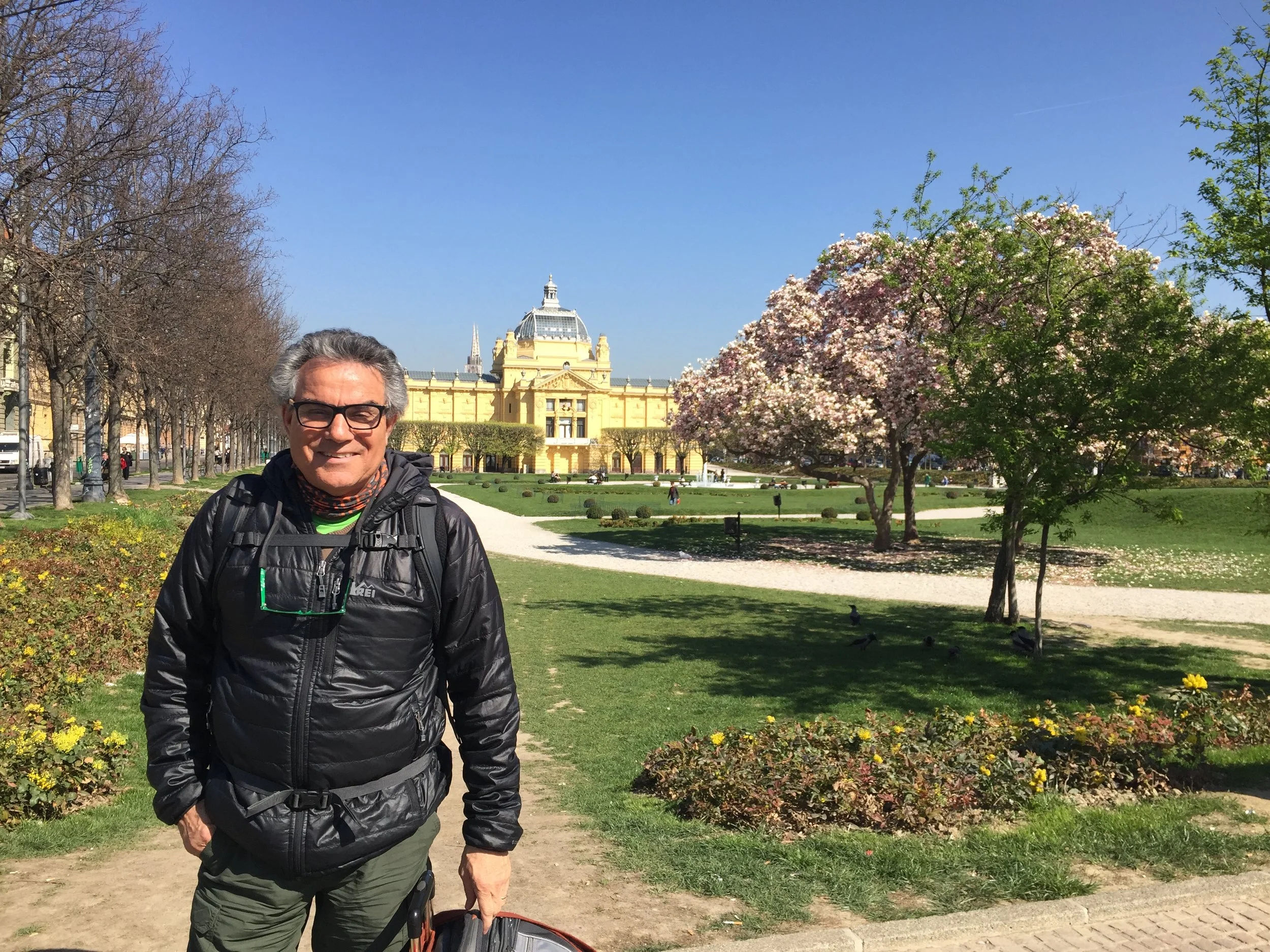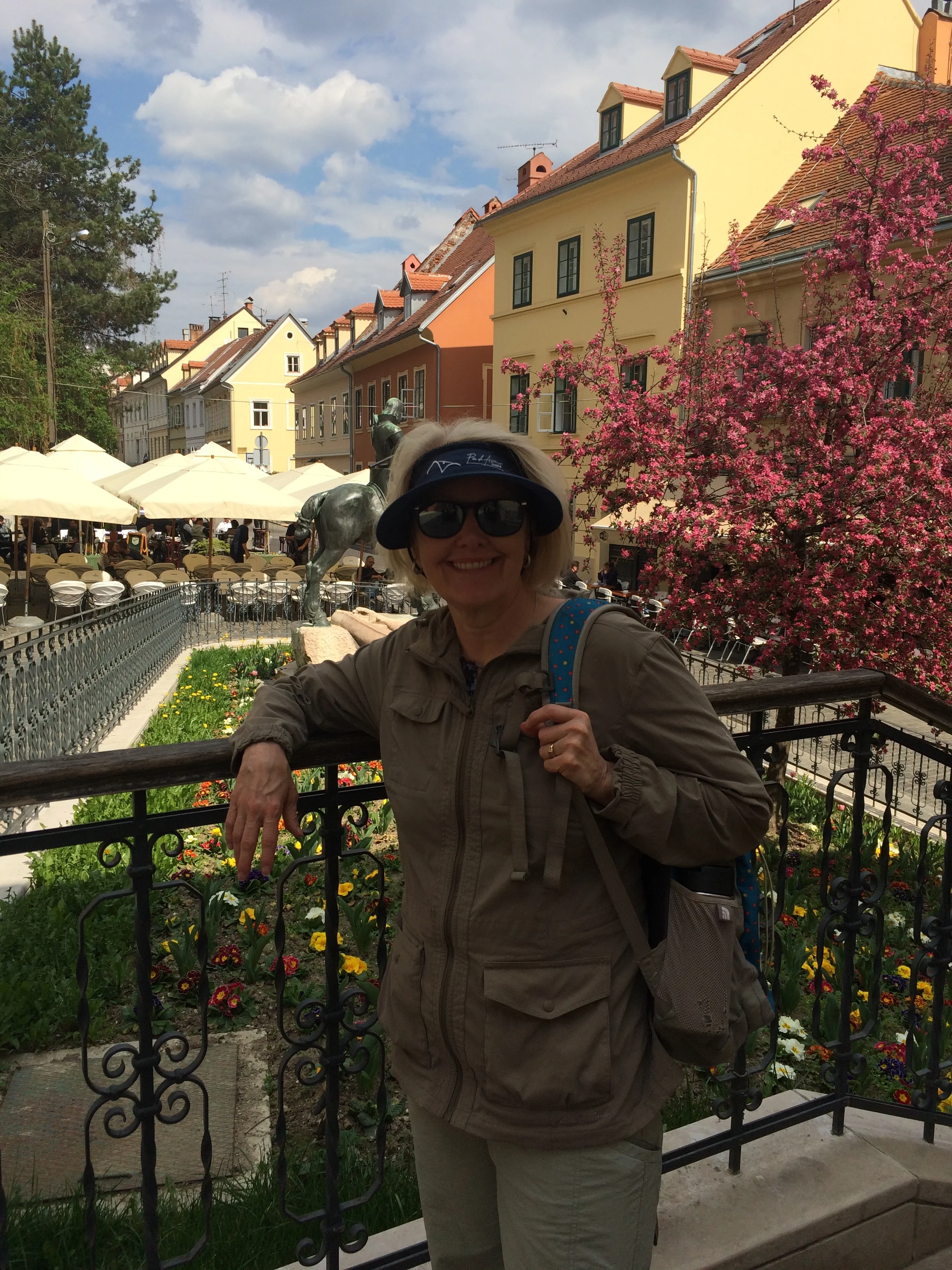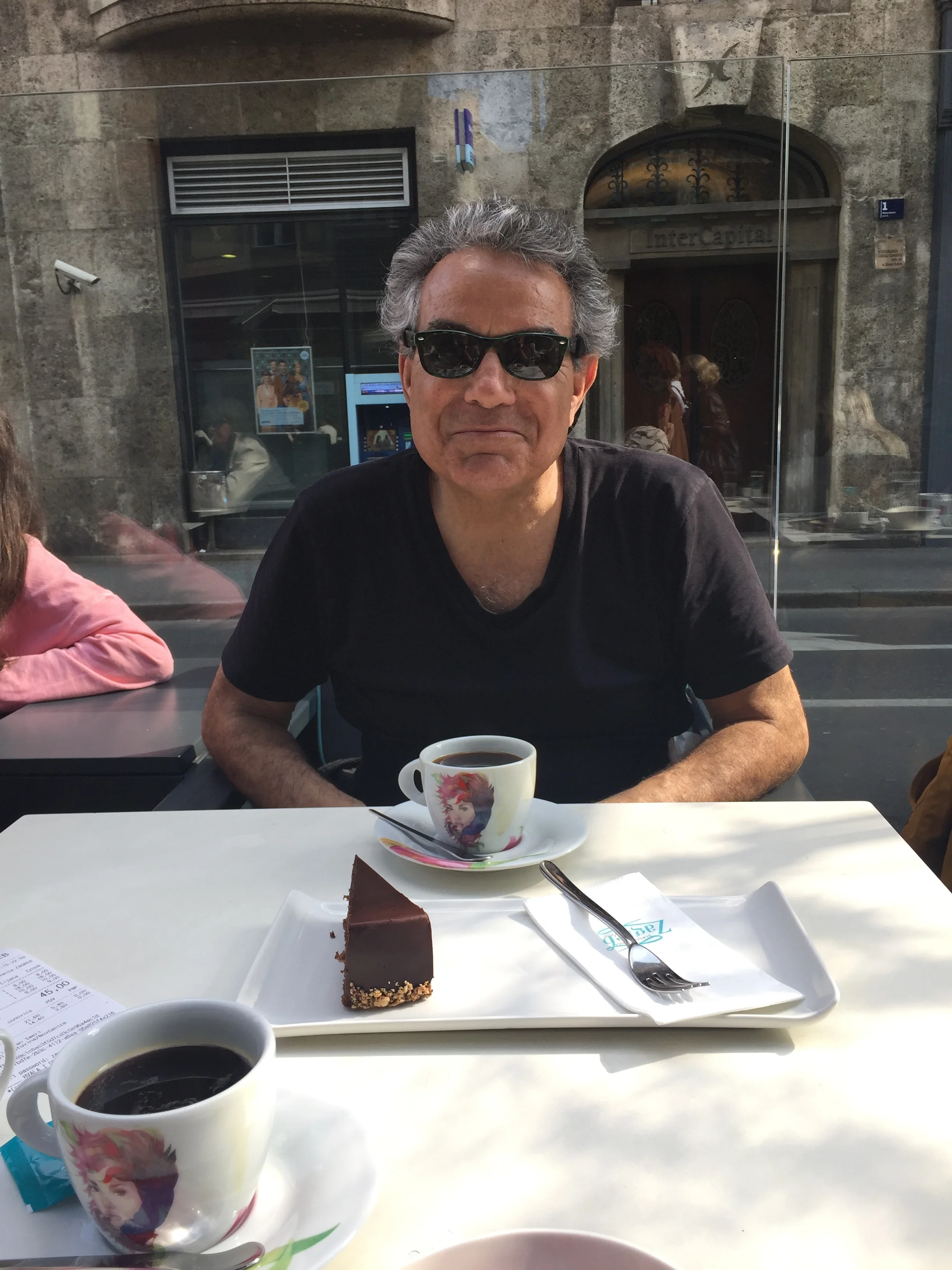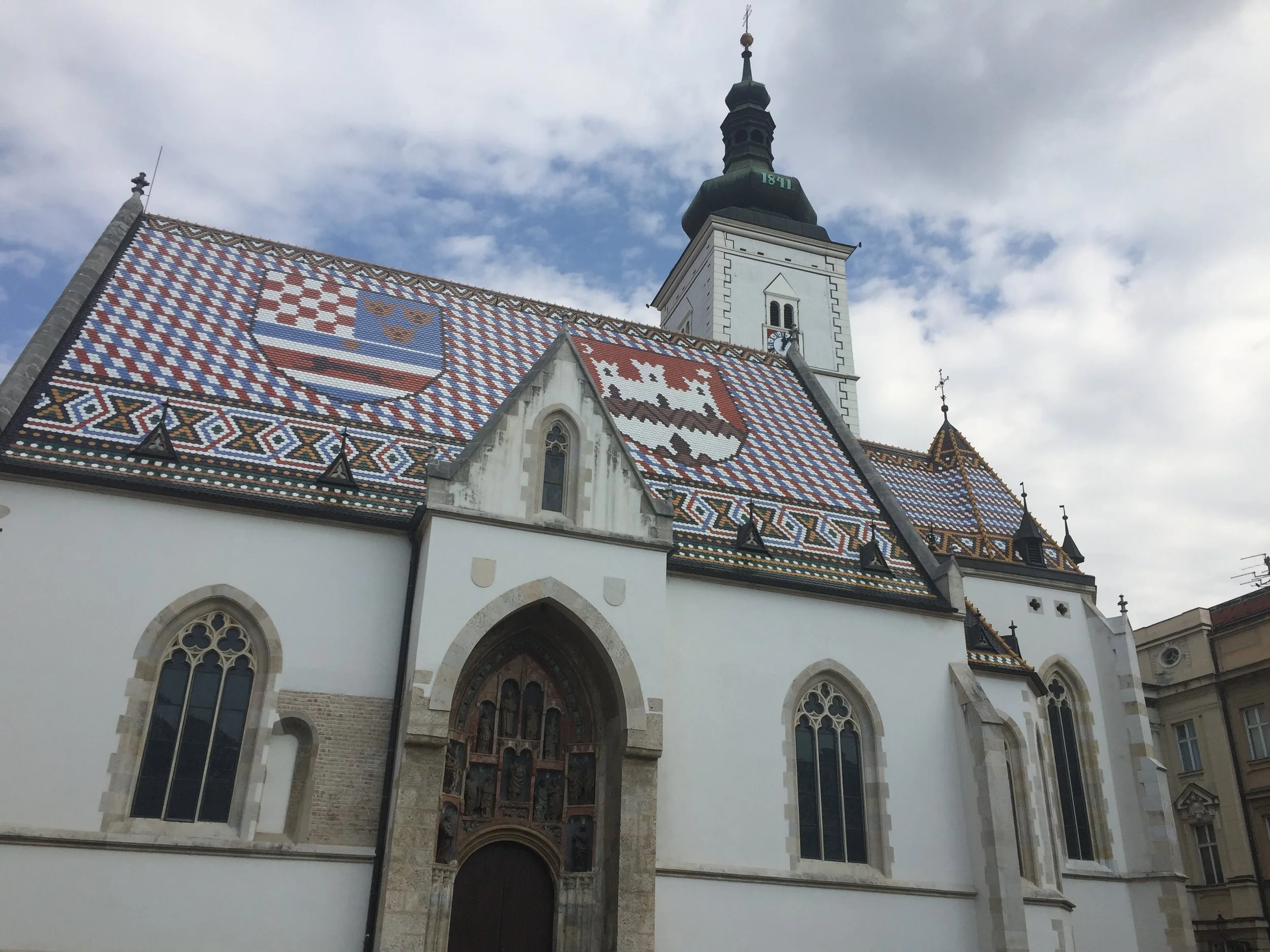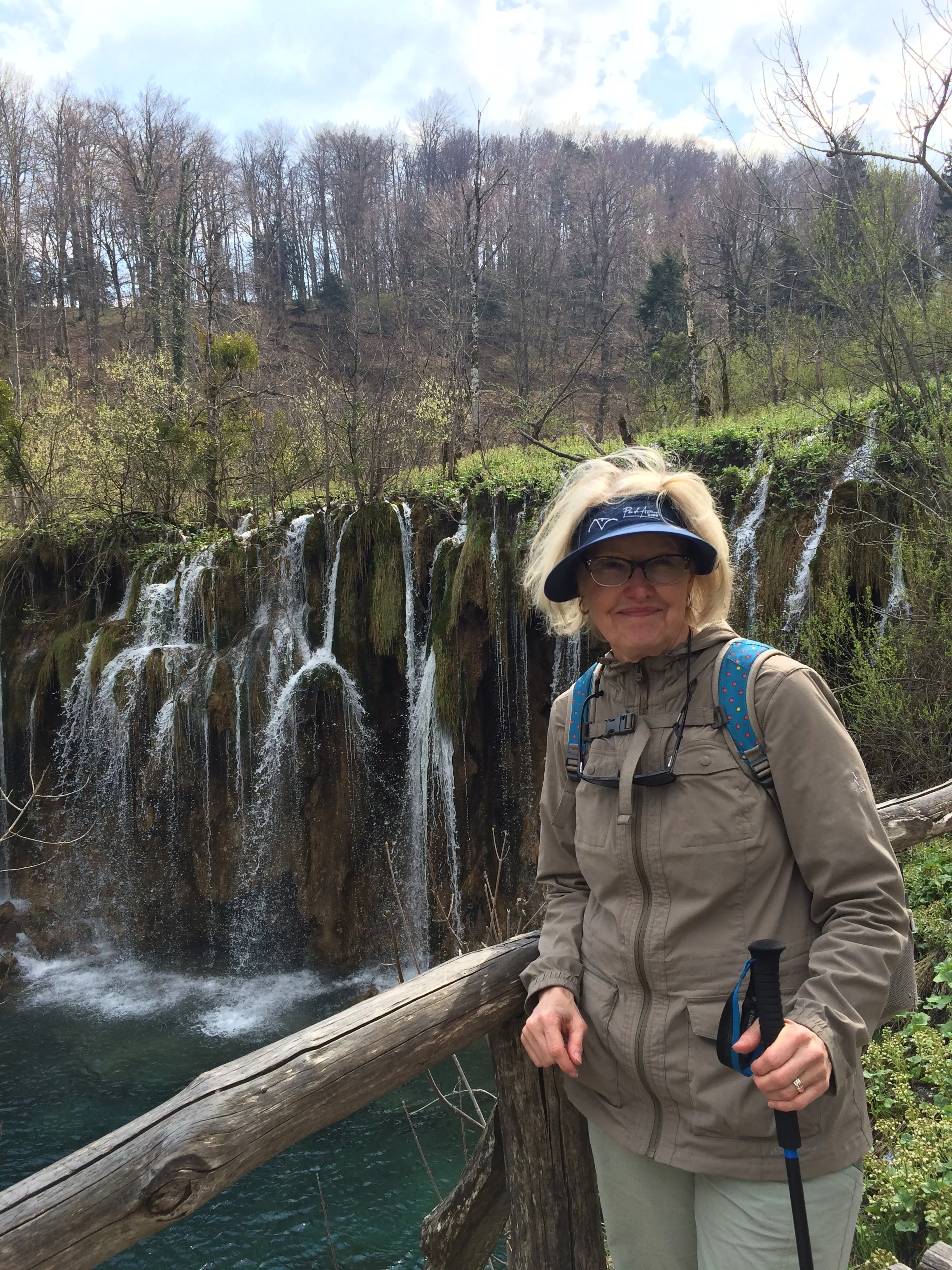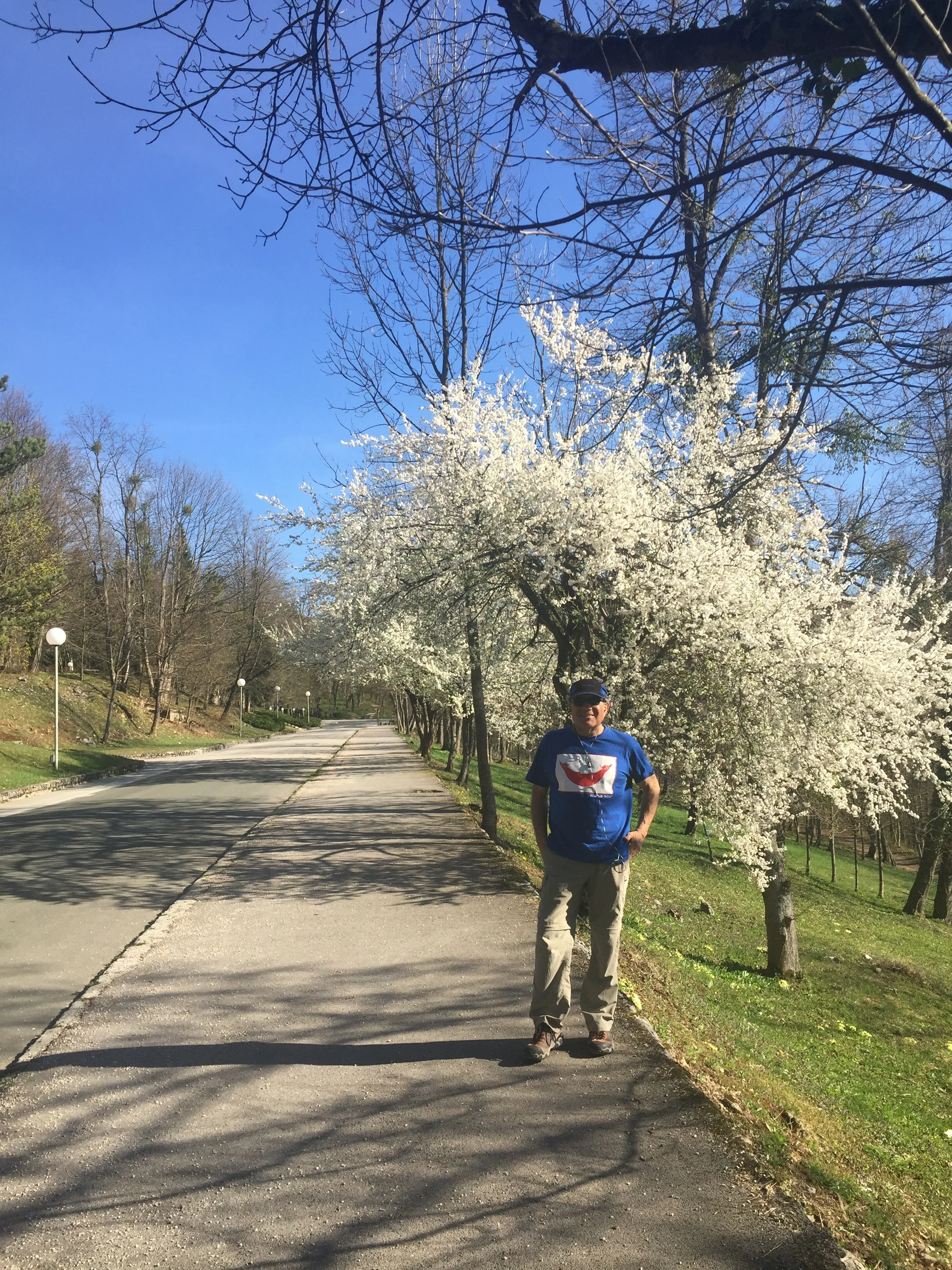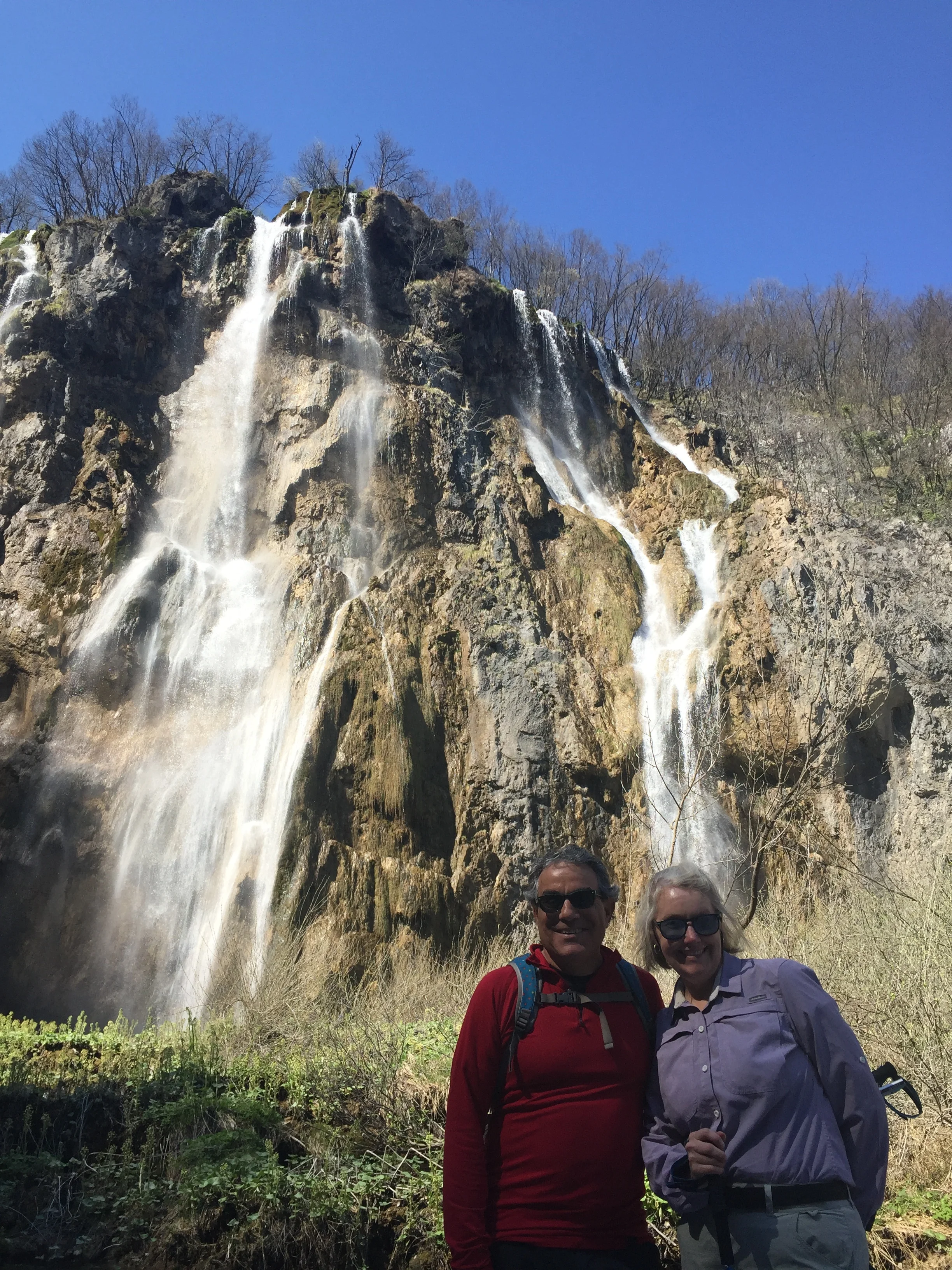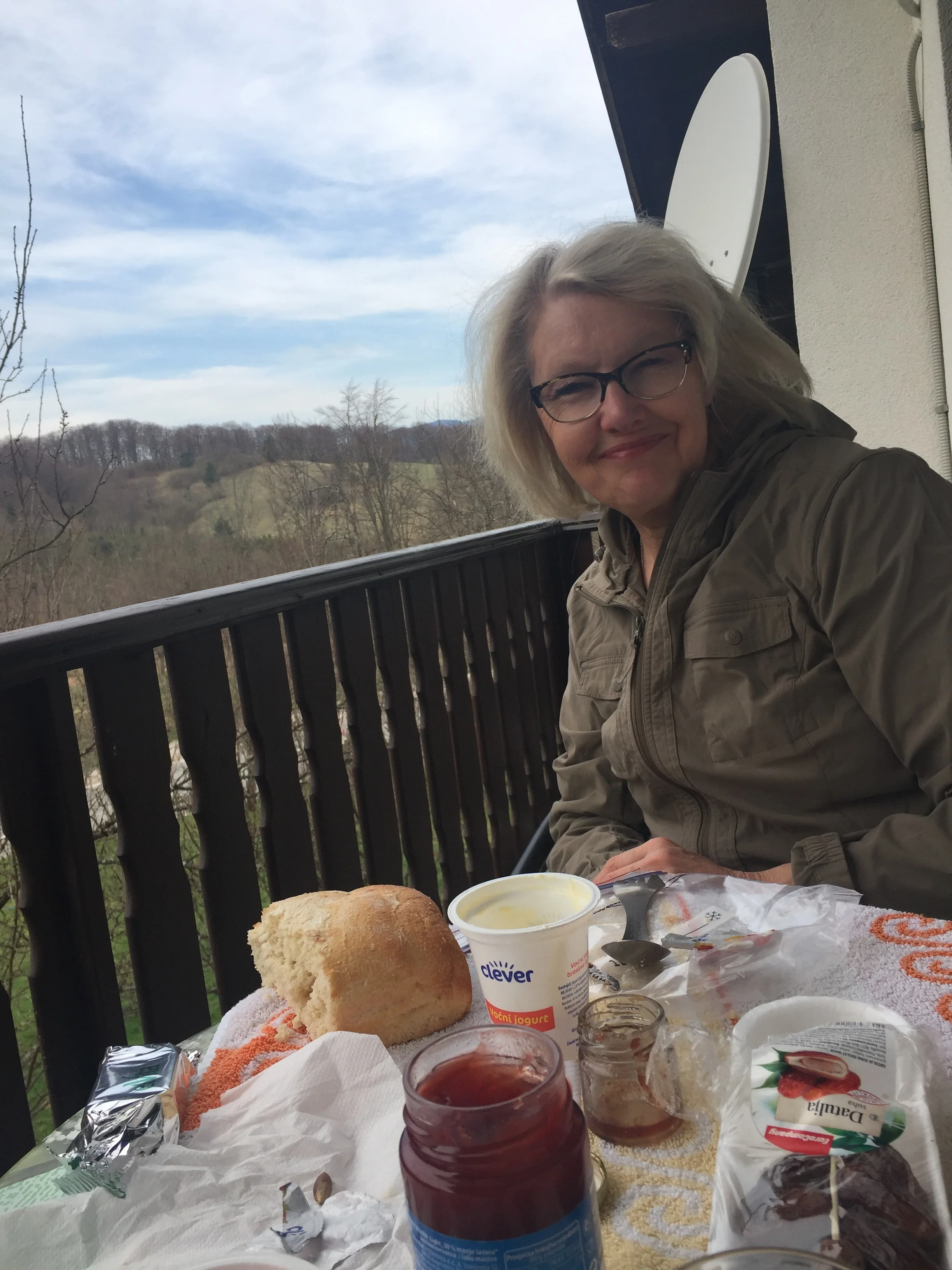Zagreb
Our first stop in Croatia was the capital city of Zagreb. We traveled by train from Ljubljana, Slovenia. The train looked like an old Soviet Union throwback, with old tattered seats and filthy toilets. When we got to the border 4 armed officers boarded the train, checking, and stamped our passports. They were puzzled by our new passports with no stamps in them, so we pulled out the original passports changed in Paris and that seemed to do the trick.
City Central Park
We arrived in Zagreb--the capital city of Croatia. Exiting the station we were able to walk through the Central Park which is very nice and displays some flamboyant Austrian architecture. Mostly, the new town has rough looking socialist structures. The city started out as two competing towns--Gornji Grad with the church and religious sector and Donji Grad with the merchants and most peasants, divided then by the river and blood bridge, the site of many battles. Today, the "blood Bridge" street still exists.
We walked through the park to our "Cool City Hostel". It had been awhile since we did a hostel, but here we had a nice room and large kitchen in the downtown area. Our host Ivana was simply charming. She offered directions to some of her favorite city sites. First, was the Times Square of Zagreb called Jelacic Square bustling with crowds and city buzz and tram stops. The squares' namesake " Govenor Josip Jelacic" united the Croats within the Habsburg Empire.
The city square was very busy. We took a historic walking tour of the old town and saw the open market and museum of Broken Relationships, ie. mostly letters between significant others. We also viewed the famous St. Mark's church with the tiled roof of Croatian insignias and red/white checker board panels, now the style of there soccer uniforms and flag. As well the city had a gigantic Cathedral of the Assumption, which was nice with three spires.
The city maintains the tradition of firing a cannon every day to remind the town folk of lunch time. This practice started for the farmers. We witnessed the firing along with a class of elemertary kids and our tour group. Although only fired one time daily it is apparently a full time job; as is the job of the two guys who light the gas lamps along the city walk each night.
The technical museum was back by the train station, a pretty good walk. It reminded us of a stereotypic, old time museum. Kind of like the Henry Ford Museum but not nearly as nice or complete, or large. Very Soviet. If anything we most enjoyed the WWII vintage American fighter planes with Croatian insignias. For example, the P 47 fighter and yellow Trainer were surprisingly large up close. We did not look closely at the trains, turbines, or generators. There was an interesting 1950’s Chevrolet Fire truck on display, and some 1960’s space stuff, but we could have skipped it all.
We probably could have skipped the entire town from the sightseeing point of view, but the historic references we learned about this country where important. The citizens seemed proud and happy after surviving the war with their neighbor Bosnia.
Plitvice Lakes National Park
Our Hometel
We left Zagreb and bused to the the center of the country where it has a wonderful national park. The park is called“Plitvice” aka Pleet- Veet-Seh. We were dropped at the 2nd entrance and crossed the road to our “Hometel”. The property owners live in a dwellingon the premises but the rooms and separate community kitchen are at the enjoining structure. We were greeted with shots of Schnapps liquor and sweet dessert. We had a nice room with balcony looking out at the rolling wooded mountains. We would stay here again. The area looked very much like “Boyne Country” in northern Michigan, US. But this area is also known for its attached lakes and waterfalls. We decided to stay several days in this area for recreation and relaxation. We would walk the country roads through the village to the entrance. The park is magnificent. The two main courses are about 5 KM and each circle a variety of glistening lakes of aqua and blue, multiple waterfalls, and caves. The paths are well marked and include lengthy footbridges over the water. This area has large calcium deposits which filter into the lakes and retard the growth of plankton, thus the water is crystal clear. There are some trout, but not nearly as many as you would expect in this large body of running water. There are tougher trekking areas deep into the woods, but these were closed to us this early in the new season. Our photos may not do the place justice, but we hope you enjoy the views.
P.S. Significantly, when we walked through the winding roads of the village we observed several bombed out homes. This area was the site of some unfortunate military action in the Bosnian/Croatian war, which the Croats call the “Homeland War”. As you would imagine here, the presentation of the events and fighting are pro-Croatian, but these damaged homes are evidence of distasteful neighbor -vs- neighbor conflict arising from ethic cleansing. Even in the Park, though unused and unspoiled for the 5 year period of the war, we observed small camouflaged bunkers. These type of sights remind us of the recent conflict, but also the stridesthe Croatian people are now making.

